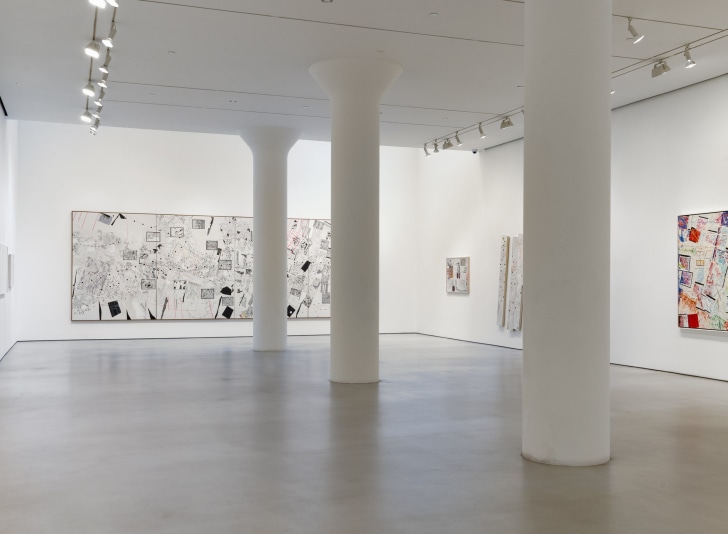
NANCY GRAVES
Inside-Outside
1970
Steel, wax, marble dust, acrylic, fiberglass, animal skin and oil paint
48 by 120 by 120 in. 121.9 by 304.8 by 304.8 cm.
NANCY GRAVES
Camouflage Series #4
1971
Signed, titled and dated on the reverse
Acrylic on canvas
96 by 72 in. 243.8 by 182.9 cm.
NANCY GRAVES
Three
1975-76
Signed, titled and dated 1975-1976 on the reverse
Oil on canvas
64 by 64 in. 162.6 by 162.6 cm.
NANCY GRAVES
Xola
1977
Oil on canvas
64 by 88 in. 162.6 by 223.5 cm.
NANCY GRAVES
Otun
1978
Watercolor on paper
28 by 20 3/8 in. 71.1 by 51.8 cm.
NANCY GRAVES
Independent Energy
1988
signed N.S. Graves VI-20-'88 lower right
Watercolor, silver leaf, acrylic and gouache on paper
30 1/8 by 30 in. 76.5 by 76.2 cm.
NANCY GRAVES
Mother Tongue
1988
Gold leaf, gouache and graphite on paper
40 by 30 in. 101.6 by 76.2 cm.
(MI&N 16815)
NANCY GRAVES
Shadowed by Feelings
1988
Gouache, watercolor and silver leaf on paper
45 by 45 in. 114.3 by 114.3 cm.
b. December 23, 1939, Pittsfield, MA
d. October 21, 1995, New York, NY
Nancy Graves was an American artist working across a variety of mediums, including sculpture, painting, print-making, and film. Her personal aesthetic emerged in the later 1960s in the form of realistic life-size sculptures of camels. These works were associated with her childhood memories of taxidermy animals in the Berkshire Museum in Pittsfield, Massachusetts, and in the idioms of Abstract Expressionism taught at the Yale University School of Art where she was a student in the early 1960s.
All images © 2020 Nancy Graves Foundation, Inc / Licensed by VAGA, New York, NY. Images may not be reproduced in any form without permission from the foundation.
Nancy Graves’s work is included in many public collections, notably those of The Whitney Museum of American Art, New York; Museum of Modern Art, New York; Metropolitan Museum of Art, New York; San Francisco Museum of Modern Art; Los Angeles County Museum of Art; the Art Institute of Chicago; National Gallery of Art, Washington, DC; and the Albright Knox Art Gallery, Buffalo, NY. The Nancy Graves Foundation was established in 1996 through a provision of the artist's Last Will and Testament to give grants to individual artists and to maintain an archive of her life and work and organize exhibitions of her art.
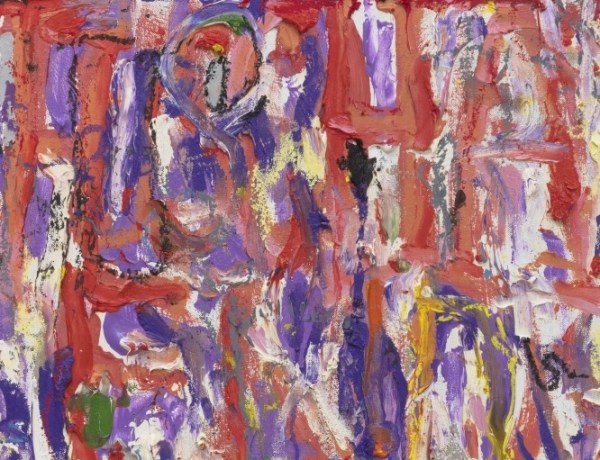
Nancy Graves & Pope.L are included in ICA Boston's exhibition of recent acquisitions.
Postwar classics combine in this booth with more jarring contemporary fare in a vibrant mix with an electric charge.
Please join us on Saturday, March 7 at 2 pm, the final day of the Nancy Graves exhibition, for a panel discussion on the life and work of the artist. Moderated by Lucy Mitchell-Innes, the panelists will include Laura Hoptman, Curator, Department of Painting and Sculpture, The Museum of Modern Art, Christina Hunter, Director, Nancy Graves Foundation, New York, author and critic Christopher Lyon and artist Jessica Stockholder.
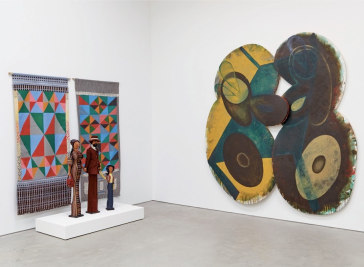
In “Painting in New York: 1971–83,” a two-part exhibition that occupied Karma’s 188 and 172 East Second Street locations in Manhattan’s East Village, curator Ivy Shapiro resisted the usual strategies that insist on seamless historical flow and cohesive unity. She selected a group of thirty women artists, highlighting their shared agendas as well as their glaring differences. Sylvia Plimack Mangold’s Untitled, 1972, a small, Apollonian, immaculately executed Photorealist painting of an empty corner of a room, was installed mere inches away from a very large, busy, and steadfastly Dionysian diptych on canvas and Masonite by Nancy Graves: Librium, 1975–76 (its title is also the trade name for an anti-anxiety drug introduced to the market in the 1960s). Graves’s dreamy work is speedy and scattered with whimsical bits of patterning, random marks, pieces of gold leaf, and lots of bright color. In sharp contrast, Mangold’s meditative vision is sustained and cleansed of hyperbole, overt sensuality, and gestural flourish.
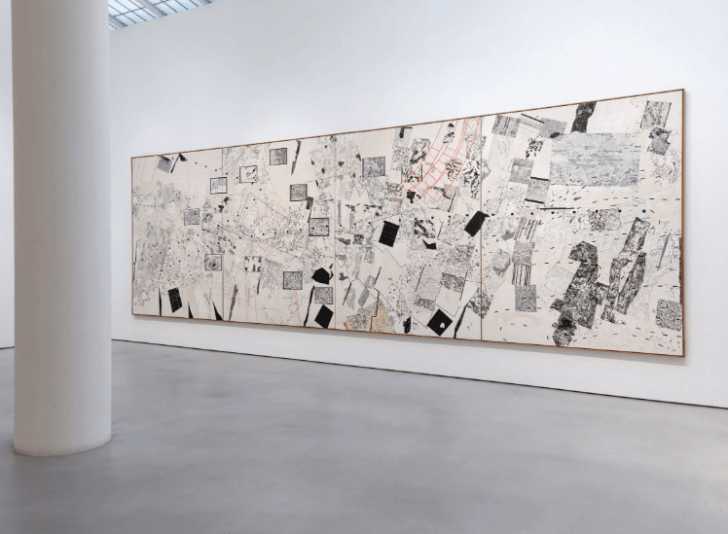
In New York, these bodies of work are now on view in “Nancy Graves: Mapping” at Mitchell-Innes & Nash, and “Shape Shifter,” a solo exhibition of work by Mary Beth Edelson at David Lewis Gallery. With Graves taking a scientific approach while Edelson a more spiritual path, the exhibitions show two women grappling with these ponderous questions at a critical historical moment.
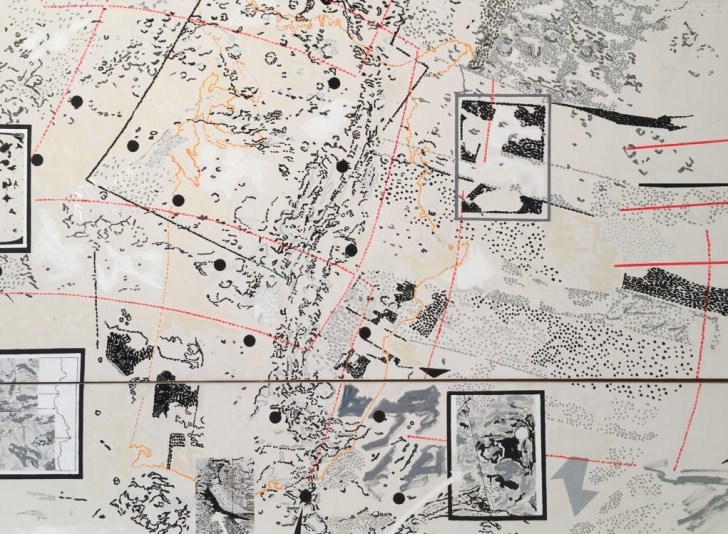
n 1959, British scientist and novelist C.P. Snow, struck by the inability of intellectuals and scientists to communicate and thereby to make sense of and tame nuclear weapons, delivered a lecture at Cambridge arguing that the divide between the sciences and the humanities was intensifying world’s problems. Two Cultures and the Scientific Revolution, the book encapsulating his ideas, became one of strongest post-World War II influences on Western public discourse. Nancy Graves (1939–95), whose paintings and works on paper are now on display at Mitchell-Innes & Nash, took Snow’s ideas to heart by creating art that was at once aesthetically challenging and intellectually probing – the humanities and the sciences all rolled into one. The root of her inspiration, however, was endearingly humble: “I was born and raised in Pittsfield, Mass., where my father worked as a guard in the Berkshire Museum of Art and Natural History,” Graves told the New York Times in January 1979. “In that way I came to think of art and natural history as one.”
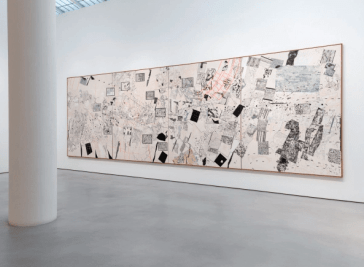
Nancy Graves’ art explores the connections between art, science, technology, and geography. Her early 1970s conceptual paintings and drawings inspired by technological progressions in cartography, such as satellite imagery of the Earth, Moon, and Mars, are currently on view at Mitchell-Innes & Nash‘s Chelsea location in New York City through April 6, 2019.
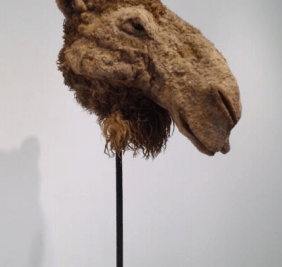
Currently on view at Mitchell-Innes & Nash is a select body of work by artist Nancy Graves, focused around the late artist’s New York-based Foundation, and which promise an expansive look at the pioneer Conceptualist’s bright career before and after her passing in 1995, including a Whitneyretrospective that marked her as the first female artist to have a solo retrospective under museum’s roof.
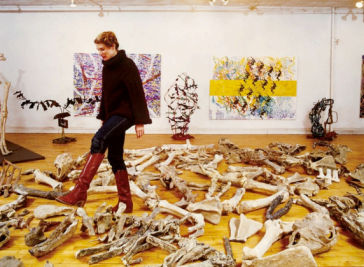
In 1969, Nancy Graves was 29 years old and had a solo exhibition at the Whitney Museum of American Art. She was the youngest person, and only the fifth woman, to be given such an honor, and it landed her work on the cover of Artforum the following year. Graves, as it happened, was also rather glamorous, an heir to the Crane paper family and at the time married to Richard Serra. (Archival photos of her in the studio allude to the kind of unstudied American chic that has to be inherited—call it Waspy sprezzatura.) Later, Graves would go on to work in such a variety of media that she arguably invented some of her own. She was, simply put, an art-world sensation. And yet, there’s a good chance that you’ve never even heard of her.
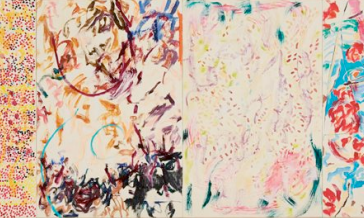
This exhibition of film, painting, and sculpture from the late artist — who had a solo show at the Whitney in 1969, and died in 1995 — is a tightly curated masterpiece. “Lixit,” 1979, with its fuzzed-out background evoking an airbrush effect, could be a Michael Williams painting from 30 seconds ago. “Xola,” 1977, is a tangle of color, line, and blank-canvas breathing room, a compositional jungle hiding several camels. That beast makes an appearance elsewhere — in the floor sculpture “Inside Outside,” in which it’s deconstructed into bits and pieces, and in “Head on Spear,” a furry, impaled camel head that seems to be surveying the entire show, barely suppressing a smirk. 1971’s “Bone Finger,” suspended from the ceiling, hangs tufts of dirtied gauze on a steel armature to create an enigmatic totem. And Graves shows her facility with bronze in the multi-part “Measure,” 1978, a cluster of fecal or intestinal nests that manage to be loveable despite the associations they evoke.
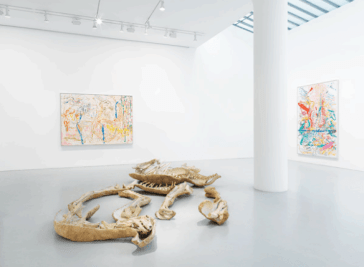
An internationally acclaimed conceptual artist, Graves (1939–1995) has been featured in hundreds of notable exhibitions and her work is in the permanent collections of major art museums. Born in Pittsfield, Massachusetts, Graves earned her MFA in painting at Yale in 1964, where her classmates included Robert and Sylvia Mangold, Brice Marden, Chuck Close, and Richard Serra (to whom she was married from 1965 to 1970).

Last week, Mitchell-Innes & Nash gallery in Chelsea presented “Nancy Graves,” a solo show of works by the prolific painter who came to prominence in the late 60s, following her solo show at the Whitney in 1969. With the continuous buzz surrounding MoMA’s “Forever Now” and a resurgence in the medium among contemporary artists, Graves’ influence continues to surface—even two decades after her passing.
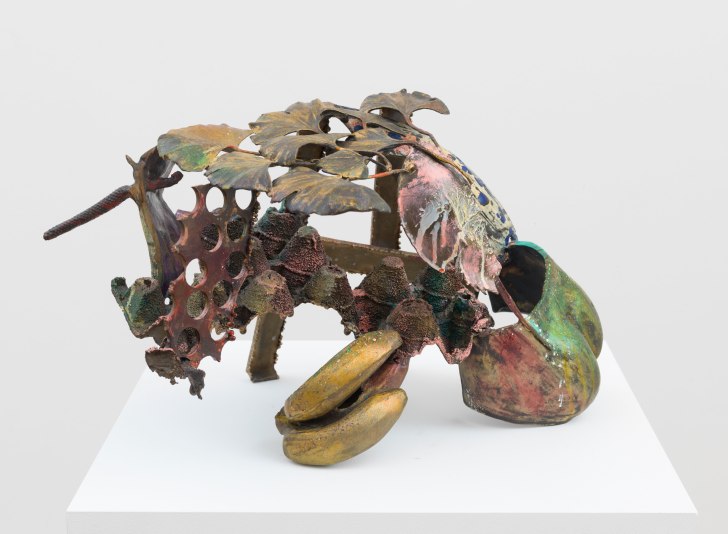
On view are works on paper and sculptures by Graves (1939–1995), the prolific New York artist who emerged as part of the same late-’60s/early-’70s milieu that birthed Lynda Benglis, Bruce Nauman and Richard Serra (to whom she was married for five years). Still, Graves didn't quite comform to the scene's Postminimalist vibe, forgoing process art in favor of a style that referenced the natural world by straddling representation and abstraction.
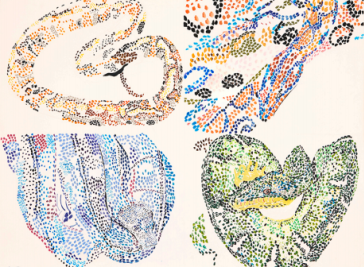
Mitchell-Innes & Nash announced its representation of the work of Nancy Graves
through The Nancy Graves Foundation. The gallery’s first Graves exhibition focuses on works depicting flora and fauna in media ranging from gouache and watercolor on paper, to painting, to bronze polychromed sculpture. The show presents work from the 1970s to the 1990s, and is on view from May 20 through June 13, 2014.
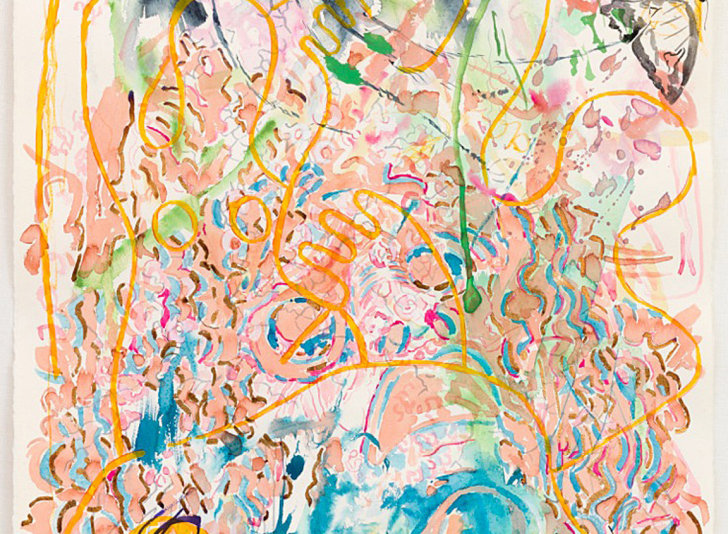
Mitchell-Innes & Nash announces its representation of the work of Nancy Graves
through The Nancy Graves Foundation. The gallery’s first Graves exhibition
focuses on works depicting flora and fauna in media ranging from gouache and
watercolor on paper, to painting, to bronze polychromed sculpture.
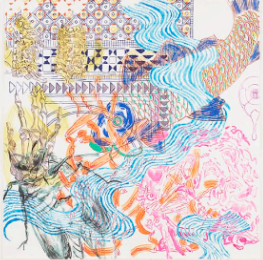
A brightly colored gouache painting by Nancy Graves, the first female artist to receive a solo exhibition at the Whitney, is in the corner of Mitchell-Innes & Nash’s booth at Frieze New York. The gallery just began representing the late artist’s foundation, after Lucy Mitchell-Innes and Robert Grosman, a director at the gallery, made some unexpected discoveries there.
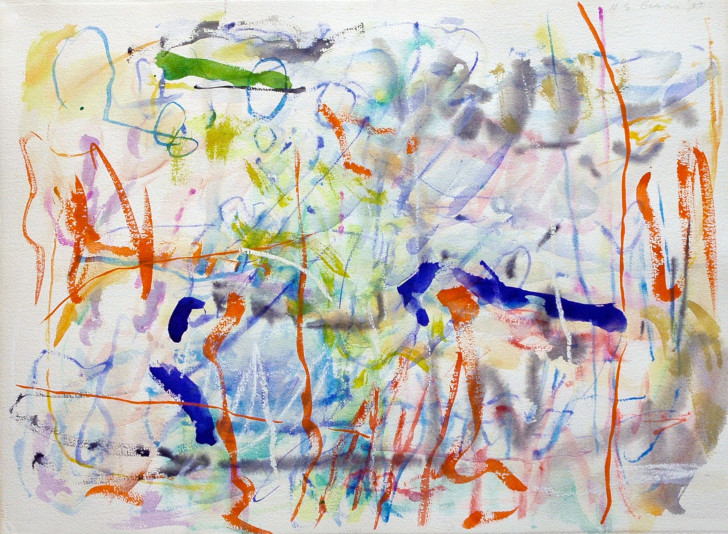
Lilly Wei reviews Nancy Graves's Synecdoche on view at Locks Gallery in Philadelphia from December 6, 2-13 - January 30, 2014:
"Graves was a prolific artist who worked across multiple mediums. Driven by an extraordinary curiosity about the natural world and a propensity for meticulous research, she adeptly paired art with science. This exhibition, "Synecdoche," brought together a selection of her gestural abstractions, wjose titles--such as Polytropos and Simula--underscore their roots in the humanities and technologu. Although shaped by a lyrical vision, they are still based on hard date, such as the satellite maps, linar photographs, motion studies, fossil records, and maps of the ocean floor that consistently inspired her art."
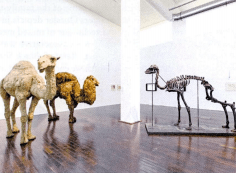
Nancy Graves is probably best remembered for her life-size, ostensibly realistic camel sculptures. When, in the late 1960s, über-collector Peter Ludwig discovered his passion for contemporary art—at the time, mainly for US Pop art—he acquired Graves’s Kenya Dromedary and Mongolian Bactrian, both 1969, for his newly established Aachen museum, Neue Galerie Sammlung Ludwig.
